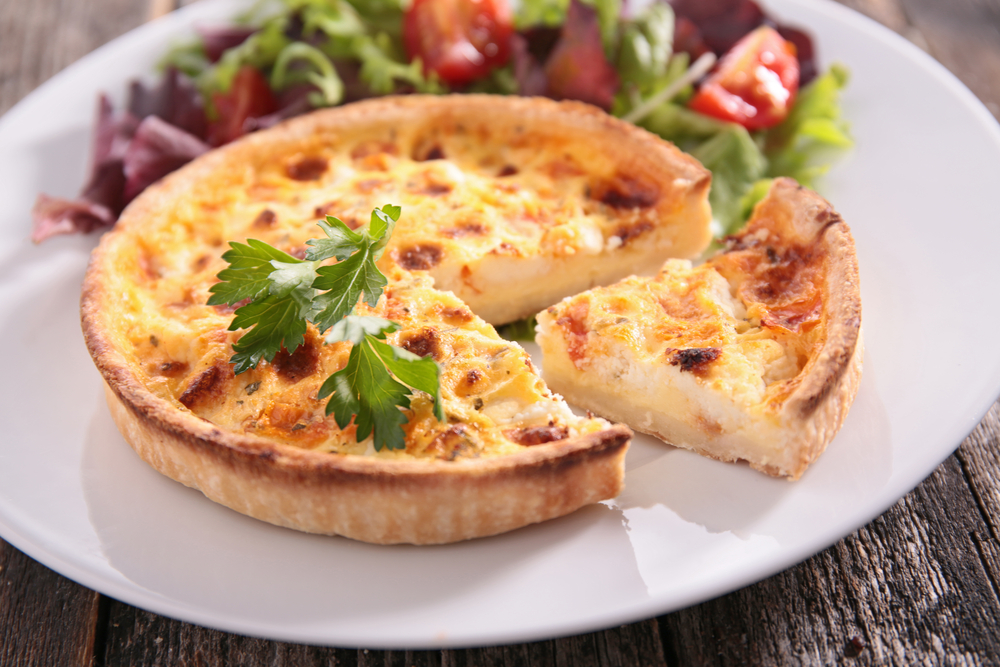

Today, quiche lorraine is mostly made with shortcrust pastry, but in the 16th century, it was based on bread dough: the scraps available after the collective bread baking (done every 2 weeks in the communal ovens of the Hautes-Vosges region) took advantage of the residual heat of the wood-fired oven to be transformed, in molds or on the stone, into tarts. This was a good way of optimizing the use of the oven without wasting leftovers, and for the housewives who were busy that day with the strategic, fortnightly baking, of offering their loved ones a tasty meal all the same.
This tradition of being born on the same day as bread-making, perpetuated in Lorraine homes until the 1970s, gave the quiche its convivial image, and its ingredients have remained largely the same: shortcrust or puff pastry, migaine (a mixture of beaten eggs and crème fraiche) and lardons.
In the 19th century, some recipes included lard, and more recently, grated Emmental cheese, mushrooms, mustard and onions have been added for the pleasure of gourmets.
Easy to prepare and easy to eat, quiche (a name derived from the German and Lorraine dialect "Kuchen") requires quality ingredients to appeal to the most discerning French palates.
For 6 people, we use the following ingredients:
For the dough:
For the filling:
If you like mustard, like three-star chef Anne-Sophie Pic, you can add a tablespoon of Savora to the miguenne.
As for serving, some people prefer to eat it straight from the oven, but the popular savory tart can also be enjoyed warm: it's up to you to see if you can wait once the good smells of this hearty but not heavy dish have filled your kitchen😊.
Bon appétit.
Valérie from Comme des Français
We're staying with the "simple but delicious" theme with these items